NRL 2019 power rankings: Top of the mountain
In the final instalment of the 2019 NRL pre-season power rankings Nick Campton looks at the top four teams in the competition and why each has a shot at the title.
LIVE TEAMS: Get ready for Round 1
COMEBACK: Cecchin to begin in reserve grade
Put the Kookaburra away and hail the comeback of the Steeden, after a long summer the return of rugby league is almost upon us.
When Melbourne host Brisbane on Thursday night the speculation and prediction will be over and all the pre-season tips will be proven to be genius, stupidity or something in-between.
Just about every team has something to like, enough of the good stuff for their fans to start dreaming of finals football but there can be only eight, and then only one who will drink from the keg of glory come October.
These rankings could change by the time the dust settles after Round 1 but as it stands this is where the 16 teams sit in terms of roster strength, potential positional changes and the impact of new recruits and coaches right now.
PART ONE: Bulldogs, Sea Eagles, Eels, Titans
PART TWO: Tigers, Raiders, Knights Warriors
PART THREE: Sharks, Panthers, Storm Cowboys
4th — St George Illawarra Dragons
2018 finish: 6th
Most of the time winning a premiership involves a good deal of luck.
Not the type of luck that involves, say, the opposition’s star player tearing a hamstring in the warm up of a semi-final or anything like that — more like key players being healthy at the right time and the team hitting form at the opportune moment.
Take, for example, last season’s St George Illawarra, who didn’t have much of either.
After winning nine of their first 12 matches the Dragons had seven players involved in various representative games, be they Origin or Test matches, over the middle part of the year. They struggled to regain momentum and slipped from first on the ladder to seventh in nine weeks.
The Dragons rallied in the finals, smashing Brisbane 48-18 in one of their best performances of the season in the first week before falling by a point to South Sydney in week two. This was without Paul Vaughan and Euan Aitken entirely — the duo had earlier been ruled out for the season — and while losing first Gareth Widdop and then Tariq Sims along the way.
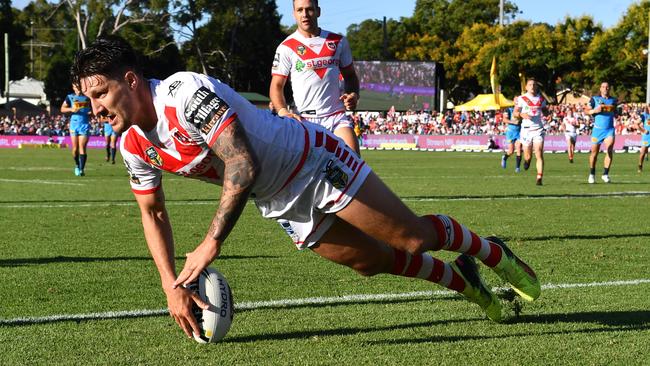
At their best last year the Dragons could hang with any team in the competition. They were a premiership caliber side who didn’t get the kind of run they needed. If they brought back the same team again and had a few things go differently they would be automatic title contenders. There’s been just enough change to throw up some question marks.
One of the Dragons’ great strengths last season was the versatility of their spine in that Matt Dufty, Gareth Widdop and Ben Hunt could all attack in a variety of different ways and each offered a unique attacking threat. Dufty’s speed is a rare gift and as the year went on the Dragons found more and more interesting ways to use him, particularly up the middle of the field. His combination with Hunt and Widdop strengthened by the week, as did the two halves combinations with each other.
On paper, Hunt and Widdop complement each other very well. Widdop is a distributor first but also has an excellent kicking game and sharp running to boot while Hunt is the inverse, a deadly runner who works best as a secondary playmaking option. Each man can be good without the other but together they make each other better and neither can carry the entire load by themselves — losing Widdop to a shoulder injury last year was the hammer blow to the Red V’s premiership hopes.
Throw in the solid-as-oak Cameron McInnes, who would have been the Blues Origin hooker if Damien Cook didn’t exist, and it’s a great foundation for any team, particularly a team with such a rugged and decorated forward pack.

Because of the known qualities of that quartet, the Dragons chances of winning the premiership in 2019 will rest on Corey Norman, the outside element to an already established combination.
In signing Norman the Dragons are trying to play both sides of the coin. Widdop is leaving at the end of the year for Warrington and they clearly thought it was better to land Norman now than trying, and perhaps failing, to find a replacement over the course of 2019. That’s smart list management, but could throw off what was a finely tuned balance.
Widdop, who has spent 177 of his 185 NRL games in the halves, will switch to fullback, Norman will join Hunt in the halves and Dufty will be the bench utility. It’s a monumental switch in combination and cohesion and dramatically alters what was one of the team’s greatest strengths.
There’s no doubt Widdop has the ability to play fullback. He’s done so for England in the 2017 World Cup and did well with the extra space. The concern is his body holding up to a more physically demanding position over the course of a full season. Widdop might not defend in the front line anymore but he’ll be covering a lot more kilometres and returning kicks and that could easily take its toll over a full year. He’s also going to come under tremendous pressure from opposition kickers and his positional play will be put to the test.
Widdop can make this move a success, but it’s no fait accompli and it may take time, which is the one commodity the Dragons do not have when it comes to the Englishman. They have — at best — 28 games left with Widdop and they need to make the most of it.
Likewise, Norman is not without his own risks. Talent has never been a problem for 28-year old and his years at Parramatta included some terrific performances, including some displays in the club’s darkest days when he kept the team afloat creatively all on his own.

A slippery runner with a nice kicking game, Norman can match up with Hunt in a similar way to Widdop, but once again the Dragons will be starting from scratch. Norman and Hunt barely played together at the Broncos and there will be a feeling out process. That’s to say nothing of Norman’s own inconsistency in his final year at Parramatta, where he regressed to many old habits following 2017’s run to the finals. Norman can be an asset for this team, but it’s yet another moving part that must fit in the right place.
Dufty will be useful as an interchange weapon because anybody with his speed and ability in the open field is an asset, but the circumstances of his deployment could add even more uncertainty. McGregor has made some noise about bringing Dufty on at fullback, switching Widdop to the halves, Hunt to hooker and either bringing McInnes off or moving him to lock. The logic behind it is understandable — Hunt’s speed would be a weapon against tiring defenders — but it’s yet another change to a spine that will have already born so many.
Having too many answers is often the same as having no answers at all. Premiership teams know who they are and trust their combinations can hold up under whatever pressure they face. Paul McGregor has a grand final quality team on his hands but with one signing the deck has been totally shuffled. If he can make it work in whatever form it may take, the Red V could be title bound.
The Dragons have 24 games to work it out before the finals and they need it right more than they need it fast, but they need it fast all the same.
BEST XVII: 1. Gareth Widdop 2. Zac Lomax 3. Euan Aitken 4. Tim Lafai 5. Jordan Pereria 6. Corey Norman 7. Ben Hunt 8. James Graham 9. Cam McInnes 10. Paul Vaughan 11. Tariq Sims 12. Tyson Frizell 13. Jack de Belin 14. Matt Dufty 15. Jeremy Latimore 16. Blake Lawrie 17. Korbin Sims
Stat of note: Every player in the Dragons starting forward pack bar Cam McInnes played either Test or Origin football last season.
The big question: How do they cover for Jack de Belin?
The intricacies and impact of de Belin’s case against the NRL and the sexual assault charges he faces have far greater implications than whatever happens on the field for the Dragons but if he is out for a significant portion of the season the club does have the depth to cover for him.
McGregor has indicated that Frizell would move to lock and Luciano Leilua would start at second row. Leilua the younger played some good football towards the back end of last season and his dynamic running and deft hands make him a different sort of threat than Frizell, who’s move to the middle ensures the Dragons can cover for de Belin’s loss of yardage.
Where the Dragons will miss de Belin most is defensively, where he leads the line along with Cam McInnes, and as a first receiver. Frizell will do well at lock, but he’s not a like-for-like replacement and de Belin was one the Dragons’ best players last year.
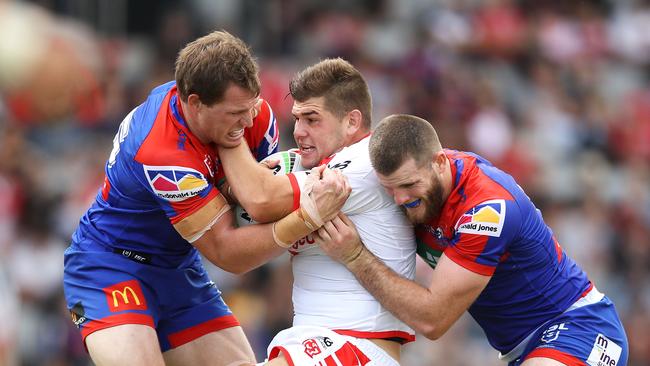
Breakout player: Blake Lawrie
With Leeson Ah Mau joining the Warriors there’s an open spot on the Dragons bench and Lawrie, who has 15 NRL games to his name over the past two seasons, is the man to fill it. A robust 22-year old who stood up to the Broncos and Rabbitohs forward packs in the two finals games last season Lawrie is a no-nonsense, old school front rower who can slot into the club’s rotation right away.
If de Belin does return at some point Leilua and Lawrie will hash it out for the final spot on the bench. Choosing between the two is a good problem to have and the Dragons depth in the middle was a big part of their success last season — along with Jeremy Latimore and Korbin Sims they have four potential bench players who could start at many clubs.
3rd — Brisbane Broncos
2018 finish: 7th
The surprise of The Great Coach Swap of 2018 was that it took so long because, ultimately, both clubs got what they needed in the end.
South Sydney are constructed to win right now. The title window is open and they were fixing to keep it that way. What better way to do that then bring in the coach with more premierships than anyone else?
Brisbane wanted a coach who could lead them into the future, who could take the young colts the club has collected and lead them for the next ten years. What better way to do that than grab the guy who looks like the NRL’s newest genius?
Anthony Seibold could have been successful again at South Sydney this season, just like Wayne Bennett could have been successful at Brisbane but decisions were made, coaches were swapped and Seibold has been put in a place where nobody not named Bennett has ever really succeeded as a coach.
We only have one season of NRL football with which to judge Seibold’s style, so in that sense he’s still not a totally known quantity. The glittering attacking football the Rabbitohs played last season lit up the sport, but is that Seibold’s bedrock philosophy or simply him playing to the strengths of the men at his disposal?

If it’s the former, we’re in luck because Brisbane have all the tools to succeed in the same way. Cody Walker was already a fine attacking player but under Seibold he became the very best version of himself, a ghost in the machine with the freedom to follow his instincts within the flexible structure Seibold placed around him. It’s very easy to see a similar transformation taking place with Anthony Milford.
Milford was better than many gave him credit for last season — he improved vastly in less than glamorous areas like his organisation and his long-kicking game but it must be admitted that the brilliant attacking football of which we know he is capable did not always come to the surface.
Part of this was by necessity. Kodi Nikorima is capable in his own ways but him and Milford have such similar strengths and weaknesses that one must take the role of organiser and let the other operate as the gamebreaker. Milford is more capable of the former than Nikorima and thus was forced to take the reins. By season’s end Milford was one of the better territorial kickers in the competition, but it wasn’t enough for Brisbane to cover the difference.
Now in his fifth season with the Broncos, Milford has never had a halves partner that truly compliments his skill set. How Seibold tries to play towards his strengths will be fascinating to watch given Milford, with his sublime attacking instincts and ability to link with the players around him, seems tailor-made to play Seibold’s game.
Darius Boyd also seems a good fit if Seibold rolls out a similar attacking style. Alex Johnston is not a noted ballplayer as a fullback, although he did improve as 2018 went on, but he recorded a career high 14 try assists last season as the fulcrum of South Sydney’s attacking formations last year.
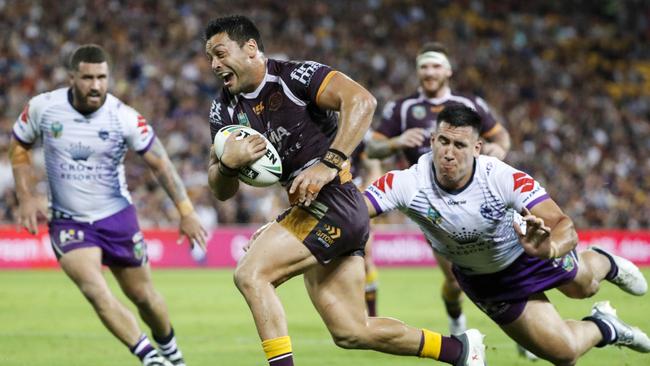
Imagine what Boyd, one of the most accomplished passing fullbacks of the decade, could accomplish if given the same opportunities? In theory it’s a great match, and may well be, even with Boyd running out of tread on the tires and the looming figure of Jamayne Isaako, who seems destined to be the club’s long-term fullback.
Of particular interest outside the playmakers is how exactly Seibold manages his forward pack. Plenty has been written about Brisbane boasting the best young forwards in the competition and rightly so but that doesn’t change the fact there’s only seven spots at best to fit close to 10 first-grade caliber players.
Matt Lodge and Joe Ofahengaue are locked in as the starting props but beyond that mysteries abound. Alex Glenn, redoubtable, unkillable, still a consummate pro and a resolute attacking danger as the oldest 30-year old in history, has won the starting job on the left edge which is a shrewd choice. Glenn is a leader and a vocal one with qualities that go beyond the stat sheet and giving the young pack a steady, reliable and strong-willed presence will be a boost.
Assuming Glenn holds his spot, which has been his since the Cretaceous Period, Matt Gillett, Jaydn Su’A, Tevita Pangai Jnr and David Fifita are all duking it out for two more starting spots and to join the likes of Payne Haas, Tom Dearden and Patrick Carrigan in the mix for the bench.
Here we see Brisbane as a victim of their own good sense. When Gillett was sidelined last season with his neck injury Su’A was forced into his role on the right edge and the young man did well, showing why he was so highly rated coming through the junior systems.
With clubs (including, it should be noted Seibold’s Rabbitohs) making inquiries after Su’A, Brisbane wrapped up the impressive 21-year old on a two-year deal. But in the meantime David Fifita, who is quite possibly the best forward prospect to come through the game in some time, proved that at all of 18-years old he was more than ready to handle NRL football. Gillett’s recovery, plus the long contract extension he signed after his neck injury, means Brisbane have more forwards than they know what to do with.
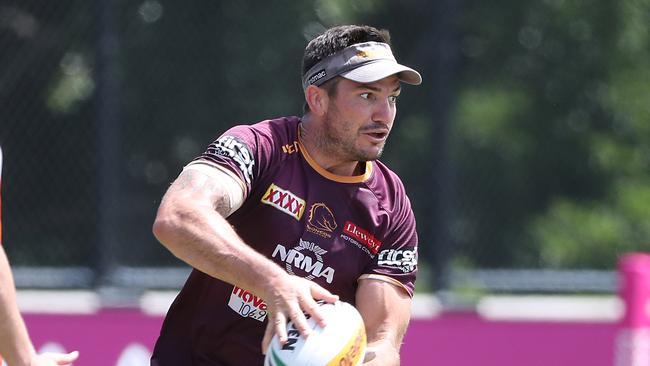
Seibold’s solution, at least for the time being, will be to switch Gillett to lock, where he hasn’t played since 2014. There are interesting possibilities behind the move — when Gillett first came into first grade he showed plenty of ball-playing skills that have since all but vanished. Could Seibold be the man to unlock them again, with Gillett reinventing himself as a first-receiver who helps set up Brisbane’s dazzling attacking patterns? Or is Seibold locked in with Su’A and Fifita as his guys and Gillett is surplus to requirements? The Rabbitohs often used just two forwards off the bench last season in serious minutes, will something similar occur here?
Likewise, Seibold’s plans for Pangai Junior, who has seemingly been on the cusp of stardom for a couple of years now, are hard to fully pierce. Bennett was eager to keep the Tongan international on something of a shorter leash, declining to play him for long minutes unless he was at second row. Seibold has given every indication he will use Pangai Junior as a middle but has named him to start off the bench in Round 1. Will he relieve Lodge or Ofahengaue, who both work better in long stints, or the returning Gillett? Could Gillett move to second row after the opening quarter? Perhaps, but then what to do with Fifita, who also needs time on the edge.
Seibold has so many pieces to move, so many choices to make and each opens the door for Brisbane to be a very different team. He is no mad scientist in the Des Hasler or Tim Sheens division, but as an outside-the-box thinker who isn’t afraid to bring a more intellectual approach to rugby league he could not ask for a more fascinating roster to work with. The Brisbane we see at the beginning at the year may be very different to what we see at the end but we can be confident that Seibold will build something just as dazzling as what he left behind.
Best XVII: 1. Darius Boyd 2. Jamayne Isaako 3. James Roberts 4. Jack Bird 5. Corey Oates 6. Anthony Milford 7. Kodi Nikorima 8. Joe Ofahengaue 9. Andrew McCullough 10. Matt Lodge 11. Matt Gillett 12. Alex Glenn 13. Tevita Pangai Junior 14. Kotoni Staggs 15. Payne Haas 16. David Fifita 17. Tom Dearden
Stat of note: Only two teams in South Sydney history scored more points in a season than Seibold’s Rabbitohs did last season.
The big question: What’s Jack Bird got?
The Jack Bird signing didn’t make sense for Brisbane when it happened and it still doesn’t make sense now. The former Shark left the Shire so he could move beyond the centres but was never fully fit for Brisbane last season as he endured a horror year, bouncing between the halves and the three-quarter line and never making much of an impact in either spot.
With a full pre-season under his belt Bird should be able to contribute more this season and he could easily form a potent combination with Corey Oates on the left edge. Just how Seibold chooses to use the flinty 23-year old will be a fun challenge for the new coach — Bird has the skill to act as a fulcrum for Brisbane’s entire left edge, much as John Sutton did for Souths last year.
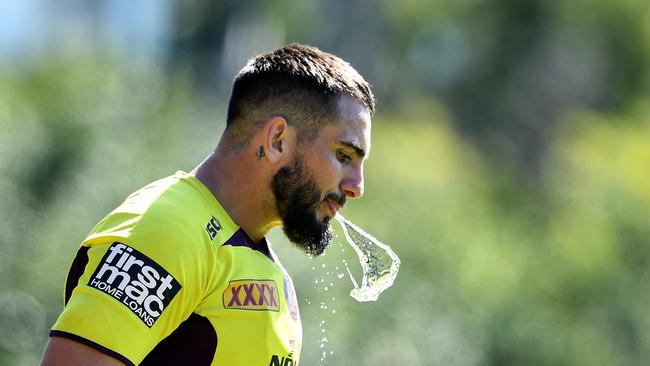
Breakout star: Sean O’Sullivan
Kodi Nikorima is a dangerous attacking player and he’s good enough to start for a top side in the NRL but it’s not hard to imagine him and Anthony Milford just being too similar for Brisbane to win the title with the two of them together.
Moving on from Nikorima this season seems unlikely but if Brisbane were to do so they have a ready made replacement in Sean O’Sullivan. The former Rooster is still a work in progress but he’s a natural first receiver and has a good kicking game, which would allow Milford to take a secondary role as a director and free him up to do more in attack. Nikorima could then drop back to bench utility, which would ease the pressure on Andrew McCullough while using Nikorima’s speed and acceleration against tired forwards, which he did to great impact in 2015 and 2016. It’s addition by subtraction and if Brisbane struggle it’s something Seibold may consider.
2nd — South Sydney Rabbitohs
2018 finish: 3rd
Wayne Bennett is not a boring coach. Whatever else he may be his teams have never, ever been boring.
There’s some myth that has sprung up since Bennett’s Dragons days that he coaches his teams to play tight, completion-based football and it’s just not true. Over the last 10 years Wayne Bennett-coached teams have finished in the top half of the league in terms of points scored eight years out of ten. In his four years with Brisbane the Broncos were fourth, sixth, second and third for points scored.
Even those Dragons teams, which were undoubtedly built on their defence more than anything else, ranked sixth, eighth and eighth for points scored.
Wayne Bennett does not make boring football teams, he gets his team to play to their strengths, which varies from team to team and year to year. It’s part of the reason Bennett has managed to coach at the top level for so long — he’s not beholden to a system and thus he’s immune to many of the major changes to rugby league.
Look at a game from 1977, Bennett’s first year coaching Souths in the old BRL. It will look like a different sport. Bennett is midway through his fourth decade as a top flight coach because he coaches to what his players can do rather than trying to make them adhere to a system.

That’s why its unlikely we see a Rabbitohs team that’s exactly like the Anthony Seibold version. There will be commonalities without doubt, but expect enough tweaks here and there to make the two teams distinctive.
Chief among the changes is Sam Burgess moving from the middle to the edge, as he done before at club and rep level. Burgess is still one of the top middle forwards in the league but will shift wider out to replace Angus Crichton and allow Cameron Murray to start at lock.
Murray has the talent to be a rep player of the future and he’s ready for a starting berth but it’s a curious move given the root of South Sydney’s downfall last season. For much of the year Seibold gave the bulk of his bench minutes to Murray and Tevita Tatola — more than once the other two players on the bench played less than five minutes.
This was successful for much of the season but the Rabbitohs undeniably ran out of gas as the season close — they won two of their last six and scored one try in their final 160 minutes of football.

Burgess will be good on the edge because he’s a good player anywhere and Murray will be a success in the middle, but it could force the Rabbitohs into a similar situation where they lack impact off the bench late in matches. Landing Ethan Lowe was a smart move and once the season wears on and the former Cowboy becomes acclimated to his new surroundings don’t be surprised if he starts on the right edge, Sam Burgess moves to prop and one of the Burgess twins moves back to the bench. Such a move would allow Murray and Sam Burgess to play longer minutes while also maximising the impact of whatever twin drops back to the bench.
These might seem like cosmetic or slight changes, but that’s what the Rabbioths need to tip over the top. Bennett has built championship teams in the past but Souths don’t need to be built, they’re ready to go and just need some of the super coach shine. When gifted with such raw materials Bennett has rarely thrown up anything but success and a premiership should be the goal at Redfern this season.
Best XVII: 1. Alex Johnston 2. Campbell Graham 3. Braidon Burns 4. Greg Inglis 5. Dane Gagai 6. Cody Walker 7. Adam Reynolds 8. Sam Burgess 9. Damien Cook 10. Tom Burgess 11. Ethan Lowe 12. John Sutton 13. Cameron Murray 14. Adam Doueihi 15. George Burgess 16. Liam Knight 17. Mark Nicholls
Stat of note: The 2019 Broncos conceded the second-most points of any Wayne Bennett-coached first grade team.
The big question: Can the Rabbitohs have rep Dane Gagai every week?
An area where Bennett has excelled in the past is taking talented players with a reputation for underperforming and getting the best out of them and there is nobody at Souths who fits that bill more than Dane Gagai. The Queensland and Australian rep has played some terrific representative football in the past few years but his club form, dating back to his Newcastle days, has often left much to be desired. Gagai scored four tries last season, marking the first time since 2015 he scored more tries for his club side than he did for Queensland.
His 108 metres from 12.5 runs per game were his lowest averages since his rookie year with Brisbane in 2011 and his seven line breaks were his lowest total since 2013. We have seen the kind of player Gagai can be when he’s roused, but it’s been some time since we’ve seen it at club level. He seems tailor-made to be the kind of player who rises under Bennett and his improvement could be what helps tip the Rabbitohs over the top, especially if his move to the wing is permanent. Short of convincing the Rabbitohs to start wearing Maroon it’s the best option they could have hoped for.
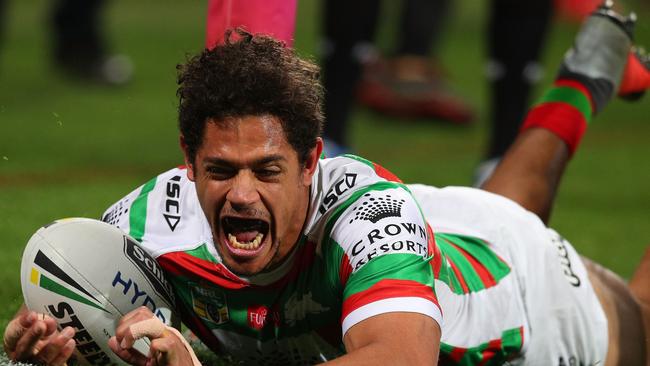
Breakout player: Liam Knight
A former junior standout, Knight has yet to make his true mark in first grade after stints with the Sea Eagles, Roosters and Raiders but he’s got the physical capabilities to be a long-term player in the NRL. With a mobility that belies his size, Knight showed flashes of talent last year with the Raiders before he was snapped up by South Sydney — he’s perfectly suited to providing impact off the bench and shapes as the new Wayne Bennett success story.
1st — Sydney Roosters
2018 finish: 1st
Here’s a stat you’ve heard too many times this summer — no team has gone back-to-back since the 1992-93 Broncos.
Every man and his dog are queuing up to pick the Roosters to win the title again this season but better teams than them have failed to do so.
The best teams of the NRL era, like the 1998 Broncos and the 2017 Storm, couldn’t do it. The salary cap-ignoring Storm couldn’t do it in the mid-00s. Ricky Stuart’s Roosters couldn’t do it and neither could Steve Folkes’ Bulldogs. Des Hasler Sea Eagles’. Paul Green’s Cowboys and Michael Maguire’s Rabbitohs and Shane Flanagan’s Sharks couldn’t do it. Even Trent Robinson’s Roosters couldn’t do it the first time.
The 2013 Roosters were a more dominant side than their 2018 counterpart — they scored more points, conceded fewer points and won more games. The 2018 side were not a historically dominant regular season team by any means — they didn’t occupy top spot on the ladder until Round 22 and didn’t wrap up the minor premiership until Round 26.
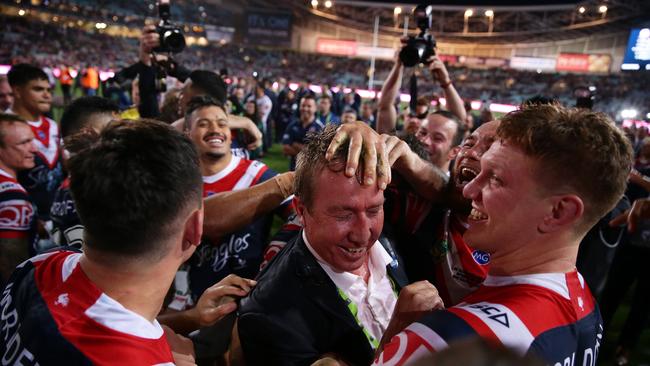
In 2018 the Roosters did not concede more than three tries in each of their last nine matches. They conceded three tries in three games in the semi-finals and one of them was an intercept. For all their attacking glamour, the 2018 Roosters (like their 2013 counterparts) were built on their defence and that’s what won them the day in their two finest hours, the preliminary final win over the Rabbitohs and the grand final victory over the Storm. Robinson had the horses running at the exact right time, to the point where even the Cooper Cronk fiasco in grand final week could not disrupt their focus.
Where the 2018 Roosters differed to the other sides that failed to match the efforts of their 2013 counterparts was that they timed their run and peaked at the exact right time. The 2014, 2015 and 2017 Roosters all won more games than the 2018 team but each peaked earlier in the season and fell in the preliminary final.
The accumulation of these failures gave the 2018 Roosters an extended point to prove — only five players played in both the 2013 and 2018 grand finals, which gave them enough experience to know what to expect with enough new players to stay hungry.
The grand final win was put into motion by 40 of the best minutes any team has ever played in a decider. The Roosters had been waiting years for the chance at another grand final and having come close several times before made them all the more dangerous.
Legendary NBA coach Pat Reilly believes that every team that wins a championship is hit with the disease of more. The players want more minutes, more money, more success but aren’t willing to pay the same price as they did to get to the top in the first place. It’s a cliche to say the Roosters greatest opponent this season will be themselves, but it’s also the truth.
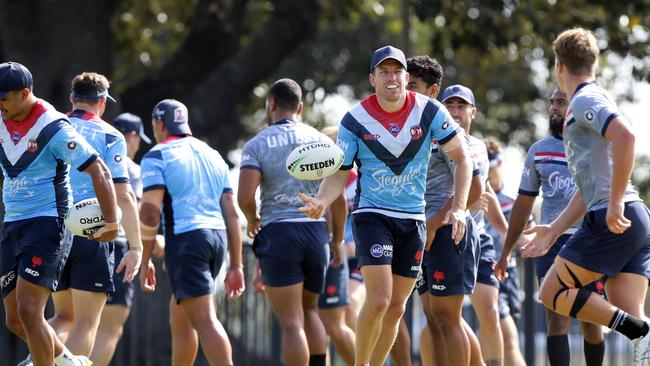
They are no longer part of the chasing pack with a hunger to prove themselves and win the title. They have climbed the mountain, come down the other side and are now being chased themselves. There was expectation last year but not like now — the Roosters aren’t just being tipped to win, they’re being tipped to dominate, to crush all before them and leave nothing but broken, devastated teams in their wake. They are being expected to hit historic highs and, no matter what has come before, that kind of pressure is hard to deal with.
On paper the Roosters don’t have a lot of weaknesses but there’s some changes that need to be considered. Blake Ferguson was extremely important for the club last season with his work from his own end — he gained more metres and had more carries than any other player in the competition and that kind of production isn’t easy to replace. Brett Morris is one of the great wingers of this era but he’s not that same sort of player.
Jared Waerea-Hargreaves produced the best season of his first grade career last year and was the most important Roosters forward but asking him to do that all again at 30-years old with 10 full seasons in first grade under his belt is a tough ask. With Dylan Napa leaving, the Roosters need Sio Suia Taukeiaho, who was superb in the grand final, to bring that kind of form through the entire season — which he’s appeared capable of doing for some time without every really doing it.
Victor Radley secured a starting spot at lock at the end of last season and he’s worth all the wraps he gets but can he hold up for an entire season in the middle, especially given he’s never seen a bloke with 20 kgs on him that he didn’t want to try and belt? There’s also further Origin representation (Tedesco, Boyd Cordner and Latrell Mitchell are all automatic inclusions if fit and Angus Crichton, Luke Keary, Victor Radley and Jake Friend may well join them) and the fact that Cooper Cronk has another year under his belt.
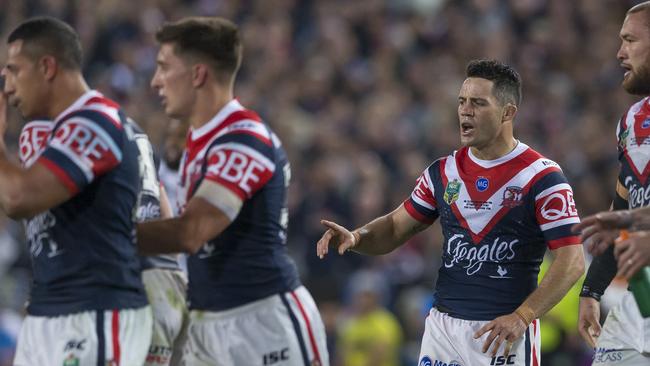
None of these are big issues — having too many Origin players is rugby league’s first world problem — but it’s rarely big things that fell aspiring dynasties. More often than not it’s a lot of little things over the course of the season that does it.
Having said all that, the Roosters deserve their premiership favouritism. Crichton is a serious upgrade for a right edge that was already extremely dangerous. Joseph Manu is only scratching the surface of the kind of player he can be and there’s still plenty of improvement in Latrell Mitchell as well. Jake Friend rediscovered some of his best form late last year and would have been a worthy winner of the Clive Churchill Medal.
That’s to say nothing of Tedesco, the best player on the team and maybe the best player in the world, and Cronk, for whom there can never be too many accolades. Given Cronk’s mental toughness and the professionalism he embodies and inspires, how could any of the Roosters ever be inspired to give anything less than their best?
Best XVII: 1. James Tedesco 2. Daniel Tupou 3. Joseph Manu 4. Latrell Mitchell 5. Brett Morris 6. Luke Keary 7. Cooper Cronk 8. Sio Siua Taukeiaho 9. Jake Friend 10. Jared Waerea-Hargreaves 11. Angus Crichton 12. Boyd Cordner 13. Victor Radley 14. Isaac Liu 15. Mitchell Aubusson 16. Zane Tetevano 17. Nat Butcher
State of note: No team has gone back to back in a united competition since the 1992-93 Broncos.
The big question: What strings can the Roosters add?
If you’re not moving forwards in rugby league you’re going backwards and finding a new cutting edge will be chief among Trent Robinson’s concerns heading in 2019. The Roosters could play the exact same way as last year and still be successful but adding new wrinkles to their play, particularly in attack, keeps things fresh and keeps players engaged.
One area the Roosters only touched on last season was the combination between Daniel Tupou and Cooper Cronk. Tupou missed a fair chunk of the season with a pec injury but when he’s fit he gives Cronk, one of the great attacking kickers of modern times, the kind of aerial threat he’s had so much success with in the past.
Like he did with Suliasi Vunivalu, or Israel Folau many years ago, Cronk and Tupou could forge a terrific attacking combination. If Cronk puts the ball in the right spot there’s not many players in the competition who could stop Tupou from going up to get it. It’s only a little thing but the little things make up life at the top.
Breakout player: Nat Butcher
Butcher has been on the cusp of first grade for several seasons now and played 13 matches last year, mainly off the bench. With Ryan Matterson and Dylan Napa moving on Butcher, who captained the Roosters 2016 Under 20s premiership side, seems the man to take the spot on the bench.
With a great motor and a physicality that makes up for his smaller stature, Butcher will be a fixture on the Roosters bench this season and will ease pressure on the three starting forwards.



